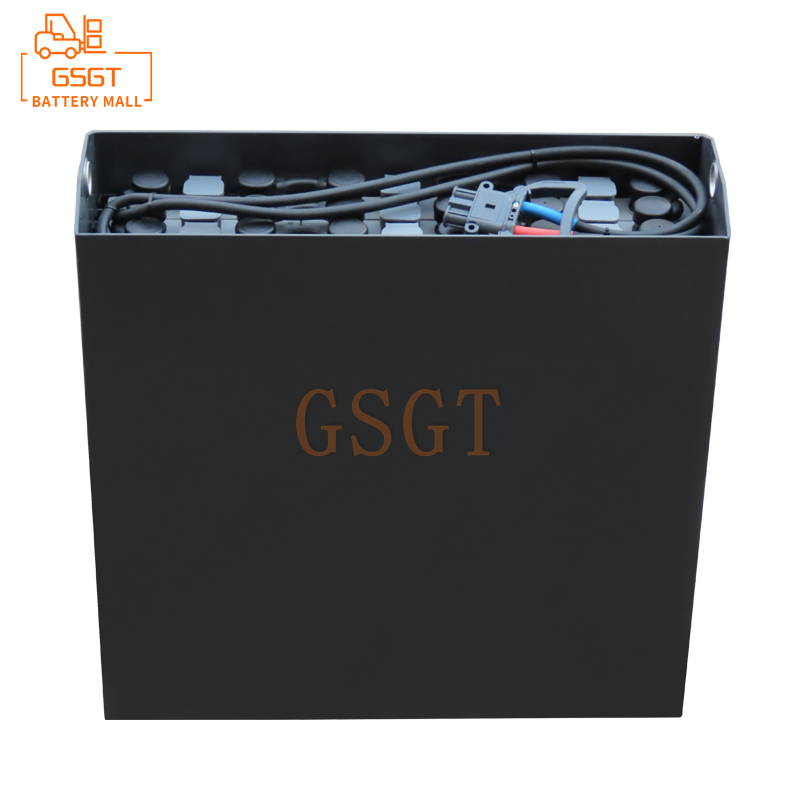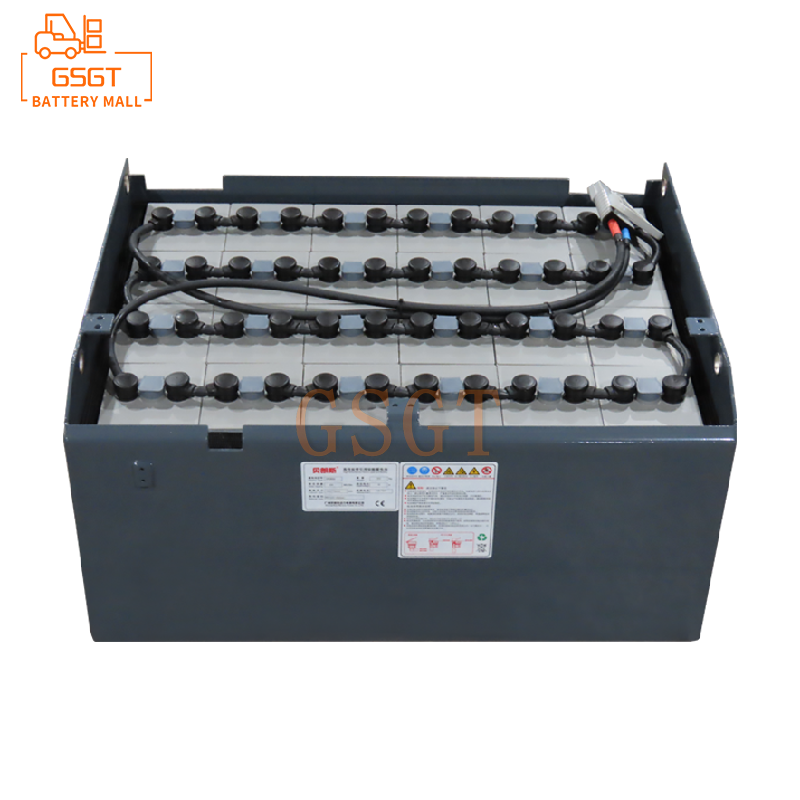Time:2025-07-23 12:07:10
Browse:615
In the operation of forklifts, lead-acid batteries are the key power source, and their performance directly affects the working efficiency and stability of forklifts. When choosing lead-acid batteries for forklifts, many people feel confused in the face of numerous products and parameters. This article will provide a detailed analysis of the key parameters when purchasing lead-acid batteries for forklifts, helping you make the right choice.
Voltage: The "power Foundation" Suitable for forklifts
The voltage of forklift lead-acid batteries is composed of multiple individual cells connected in series, and the nominal voltage of each individual cell is usually 2V. The common voltages of lead-acid batteries for forklifts include 24V, 36V, 48V, etc. Then how should one choose the appropriate voltage? This depends on the type of forklift and the intensity of the work. Generally speaking, small forklifts such as walking stackers may only require a 24V voltage. Medium-sized narrow-aisle forklifts with 36V are relatively common. Large counterbalanced forklifts are usually equipped with batteries of 48V or even higher voltage. What will happen if the voltage is not properly selected? If the voltage is too low, the forklift may not be able to provide sufficient power, affecting the operation efficiency and even making it difficult to start. If the voltage is too high, it may damage the electrical system of the forklift, posing a safety hazard. Therefore, choosing a voltage that matches the forklift is the foundation for ensuring its normal operation.
Capacity: The "energy reserve" that determines Battery life
Capacity is an important parameter of lead-acid batteries for forklifts, measured in ampere-hours (Ah). It determines the amount of electricity that the battery can output under certain discharge conditions, that is, the working duration of the forklift after a single charge. For instance, if the lead-acid battery capacity of a certain forklift is 400Ah and the working current of the forklift is 40A, theoretically, it can operate continuously for 10 hours (400Ah÷40A = 10h). When making an actual choice, the working scenario and load conditions of the forklift should be taken into consideration. If the forklift operates frequently and moves heavy objects, a large-capacity battery is needed to ensure its range. If the work intensity is low and the operation time is short, a battery with a smaller capacity can meet the requirements. However, it should be noted that a larger capacity is not necessarily better. Excessive capacity may lead to an increase in battery volume and weight, occupying space, and may also affect the forklift's handling performance and increase costs.
Discharge rate: The "Invisible Killer" Affecting Battery Life
The discharge rate refers to the ratio of the current magnitude during battery discharge to the rated capacity of the battery. The actual available capacity of the battery will vary at different discharge rates. Generally, the greater the discharge current, the less electricity the battery actually discharges, and the greater the impact on the battery's lifespan. For instance, under the condition of high current discharge, the surface of the battery plates will rapidly sulfate, blocking the pores of the active material, resulting in a decrease in battery capacity and a shortened lifespan. Forklift lead-acid batteries are usually marked with 5-hour rate capacity or 10-hour rate capacity, etc. This means the amount of electricity the battery can output within the corresponding discharge time. When making a selection, it is necessary to consider the actual working current of the forklift and try to choose a battery that can operate at an appropriate discharge rate to extend the battery's service life.
Service life: A "key indicator" of long-term benefits
The service life of lead-acid batteries for forklifts is also an important consideration factor. Generally speaking, under normal use and maintenance, its cycle life can reach several hundred to over a thousand times. The cycle life here refers to the process from a fully charged battery to a fully discharged one and then to a fully charged one. There are numerous factors that affect service life, including charging methods, depth of discharge, and ambient temperature during use. For instance, over-discharge (excessive depth of discharge) will accelerate the sulfation of battery plates and shorten their lifespan. In high-temperature environments, the chemical reactions inside the battery accelerate and the evaporation of the electrolyte intensifies, which can also have an adverse effect on its lifespan. Therefore, when making a purchase, it is not only necessary to pay attention to the initial performance of the battery, but also to understand its lifespan under different usage conditions to ensure long-term usage benefits.
Frequently Asked Questions
Question: What is the relationship between the price and parameters of lead-acid batteries for forklifts?
Answer: Generally speaking, the higher the parameters, the relatively higher the price. For instance, the larger the capacity of a battery, the higher its manufacturing cost and price will be due to the fact that it contains more active substances. High-voltage batteries, due to the need for more individual cells to be connected in series and higher requirements for the consistency of the battery pack, will also have a corresponding increase in price. However, the price is also influenced by factors such as brand and market supply and demand. When making a purchase, one should comprehensively consider performance requirements and budget, and choose products with high cost performance rather than simply pursuing high parameters or low prices.
When choosing lead-acid batteries for forklifts, key parameters such as voltage, capacity, discharge rate and service life should be comprehensively considered. Based on the actual usage conditions of the forklift, the pros and cons should be weighed to make the most suitable choice. It is hoped that this article can provide you with a strong reference when purchasing lead-acid batteries for forklifts, ensuring the efficient and stable operation of your forklifts.

$3050

$1690

$1200

$2610

MESSAGE
Professional And Efficient
Security
Affordable Price
Professional Services